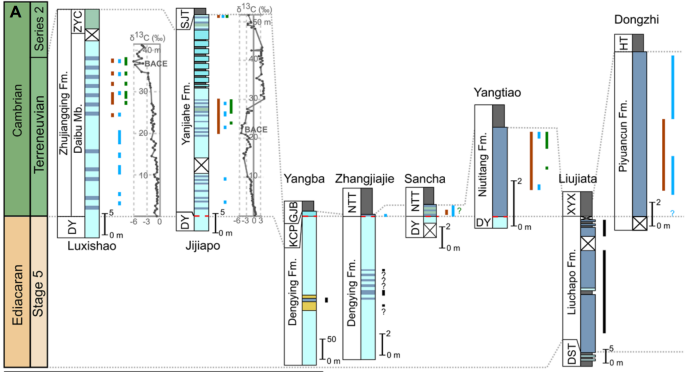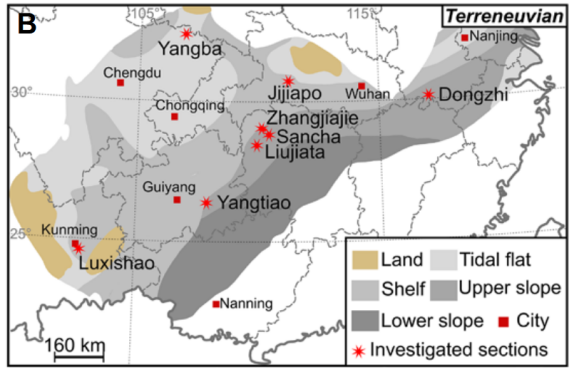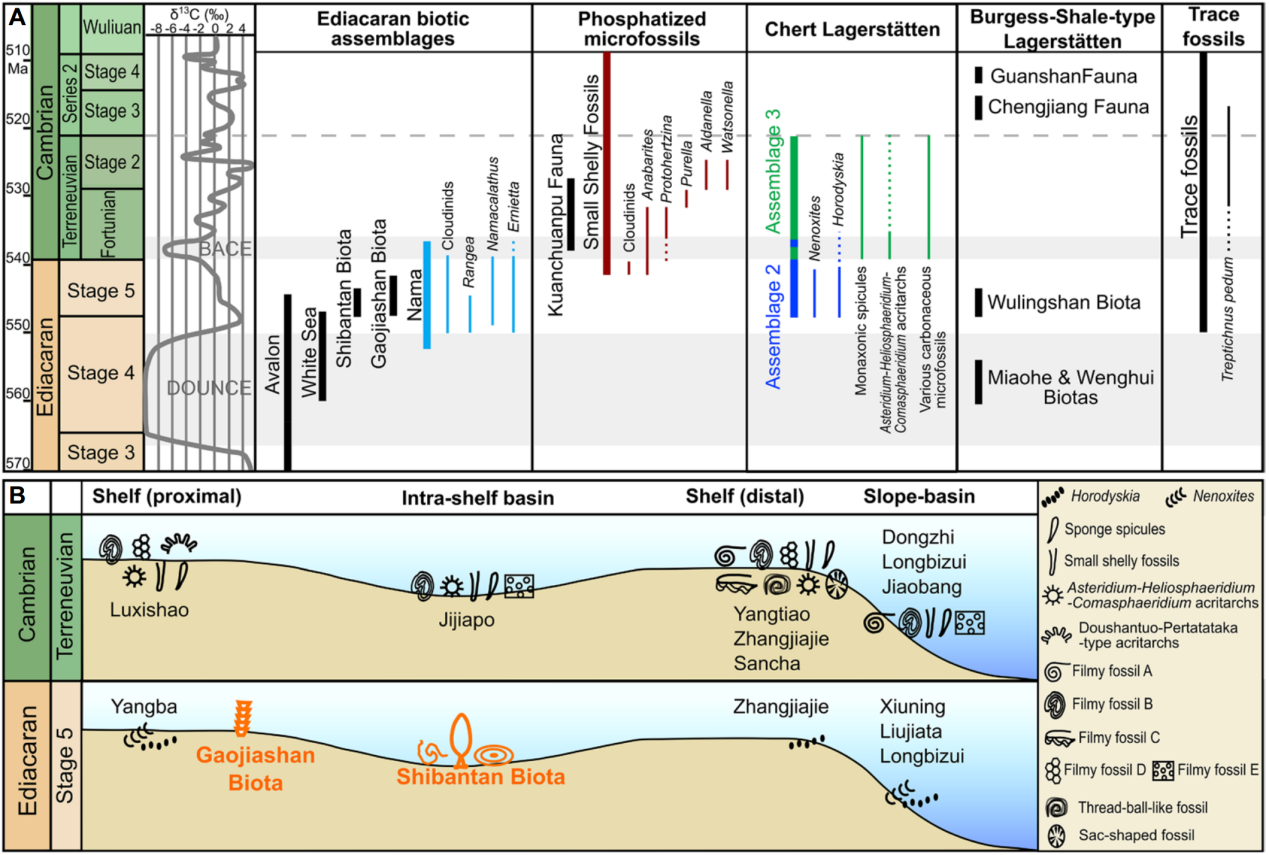The Cambrian explosion, which occurred from the late Ediacaran to the early Cambrian, stands as one of the most pivotal evolutionary events in Earth’s history. Across the Ediacaran-Cambrian boundary (ECB), the once-thriving Ediacara-type biota vanished, while metazoans forged a Phanerozoic-type ecosystem within approximately 18 million years (539–521 Ma). Our previous understanding of this critical evolutionary transition relied on relatively continuous records of small shelly fossils from shallow-water carbonates and phosphatic deposits, alongside Ediacara-type macrofossils and trace fossils mainly preserved in siliciclastic rocks. However, the widely developed sedimentary discontinuities near the ECB in shallow-water settings hindered a comprehensive understanding of the biological processes during this turning point.
Recently, the research team led by Prof. Maoyan Zhu from the Nanjing Institute of Geology and Palaeontology, Chinese Academy of Sciences (NIGPAS), proposed that chert deposits across the ECB offer a new window into this biological revolution. The study, with Dr. Cui Luo as the first author, was published online on March 10, 2025, in Geology.
Cherts, being able to exquisitely preserve non-mineralized organisms and their anatomical details, have been exceptional taphonomic windows since the Archean. The Ediacaran-Cambrian cherts of South China have been investigated by Chinese paleontologists since the 1990s, with dozens of microalgal genera recognized. Built on this basis, the team examined cherts from eight ECB sections across South China and delineated two distinct fossil assemblages through integrated paleontological and carbon isotope stratigraphic analyses.
The terminal Ediacaran fossil assemblage (550–539 Ma) is dominated by enigmatic string- and strap-like forms of uncertain affinity, with Horodyskia (bead-like strings) and Nenoxites (crescent-segmented strings) being particularly common. These fossils are preserved primarily as clay-mineral casts, differing from the carbonaceous or permineralized preservation typical of other chert Lagerstätten. In contrast, early Cambrian cherts (539–521 Ma) reveal a highly diverse assemblage with finely preserved anatomical details, encompassing acritarchs, algal microfossils, mineralized animal skeletons, and carbonaceous fossils of uncertain affinity. A large acanthomorphic acritarch from the Luxishao section echoes forms from the early Ediacaran, suggesting that some ancient taxa may have persisted into the Cambrian. Sponge spicules in cherts extend below the nadir of the basal Cambrian carbon isotope excursion (BACE), indicating that biomineralization in sponges, like that of small shelly fossils such as Anabarites, originated prior to the Cambrian. Especially noteworthy are the complex carbonaceous filmy fossils unique to the Cambrian assemblage, which are distinct from algal remains and absent in Precambrian cherts. These fossils, potentially representing animal cuticles, indicate an innovation in soft-tissue structures among multicellular eukaryotes at the dawn of the Cambrian.
These findings align with prior insights from other taphonomic windows, confirming a rapid biospheric shift near the ECB; a few Ediacaran forms persisted into the Cambrian, while Cambrian-specific skeletal fossils extend below the BACE nadir. This consistency reinforces previous conclusions while highlighting the potential of chert fossil records as a new window for exploring ECB biological changes. The broad distribution of cherts across varying water depths and their capability of preserving delicate non-mineralized tissues could provide good complements to the skeletal fossil data from shallow-water settings. As such, this avenue of research merits heightened attention in future studies.
The study also shows that representative members of both assemblages are widespread across the Yangtze craton, from west to east (Yunnan to Anhui) and from proximal shelf to distal upper slope facies. However, vertical overlap between the two assemblages is rare, with only one prior report noting their co-occurrence. Future investigations are required to test whether these assemblage differences stem from taphonomic bias or sedimentary hiatus.
This study was supported by the National Key Research and Development Program and the National Natural Science Foundation of China. Numerous team members offered help in the extensive fieldwork. Dr. Soo-Yeun Ahn contributed significantly to the material collection during her postdoctoral project.


Fig. 1 Investigated sections and their distribution in the Terreneuvian lithofacies paleogeographical map.

Fig. 2 The contrasting characteristics between the terminal Ediacaran (A–F) and the early Cambrian fossil assemblages (G–O).

Fig. 3 Some of the carbonaceous filmy fossils in the Cambrian cherts.

Fig. 4 (A) Temporal distribution of chert Lagerstätten and other taphonomic windows across the Ediacaran-Cambrian transition, along with representative fossils in each window. (B) Spatial distribution of fossils in cherts across the Ediacaran-Cambrian transition.
Download:
